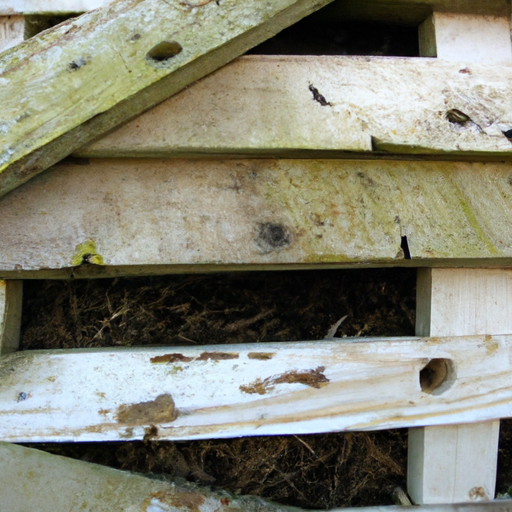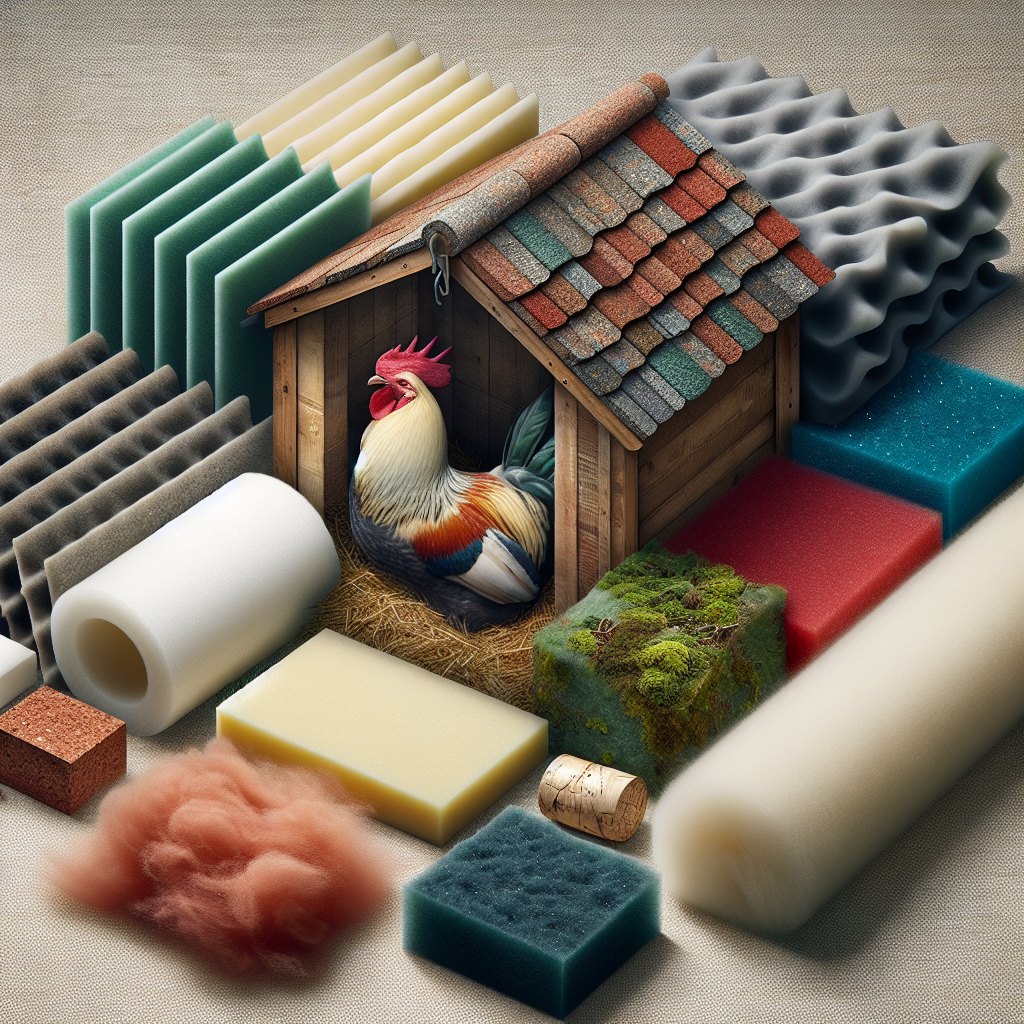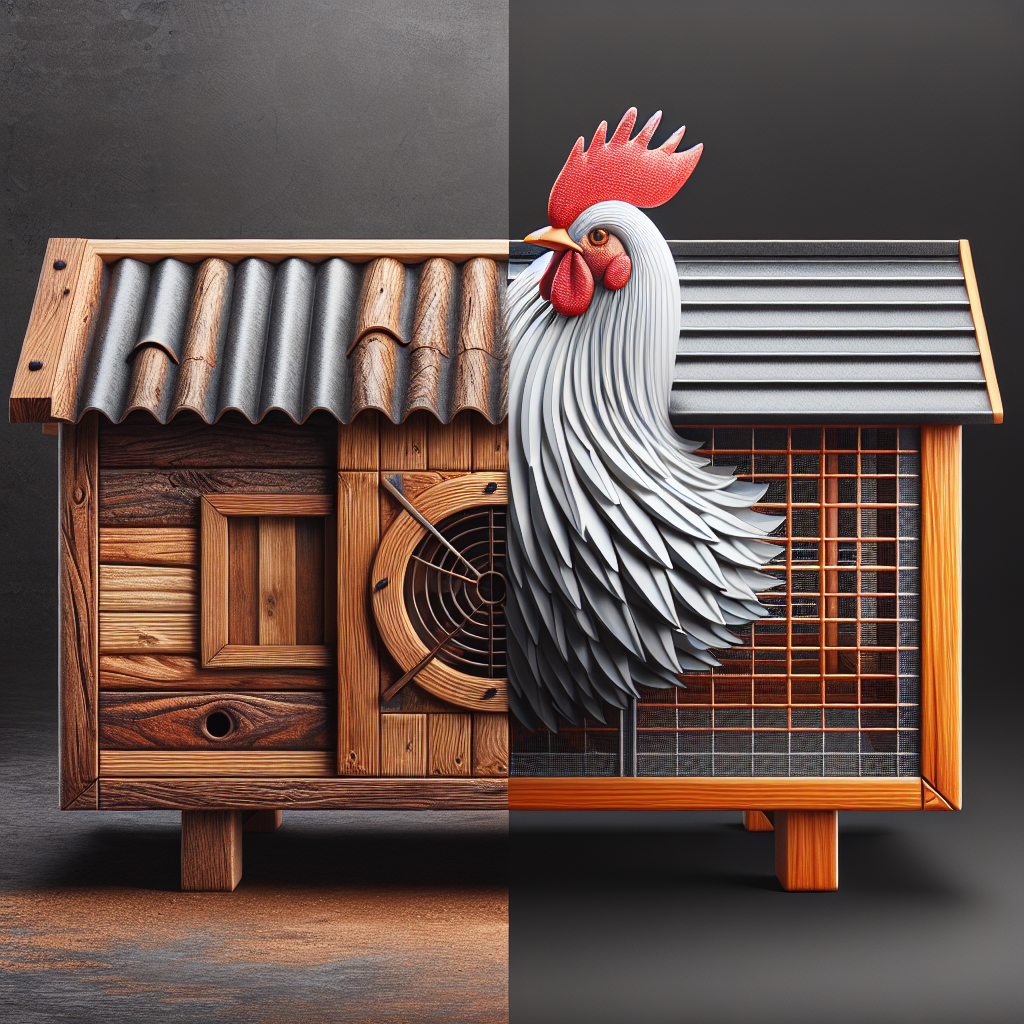If you’re in the market for a new chicken coop, you may be wondering which material is the most durable: wood, metal, or plastic. Well, wonder no more! In this article, we will compare the durability of these three popular coop materials. Whether you’re concerned about withstanding harsh weather conditions or curious about longevity, we’ve got you covered. So, sit back, relax, and let’s explore the world of chicken coop materials together!
Wood
Natural Durability of Wood
Wood is a widely used material for building chicken coops due to its natural durability. Different types of wood have varying levels of durability, with some species being more resilient to rot and decay than others. Hardwoods such as cedar, redwood, and cypress are known for their high resistance to rot, decay, and insect damage. Softwoods like pine and fir, while not as durable as hardwoods, can still be used for coops with proper treatment and maintenance.
Types of Wood Used for Coops
The types of wood commonly used for chicken coops include cedar, redwood, cypress, pine, and fir. Cedar and redwood are particularly popular due to their natural resistance to decay, rot, and insects. These woods also have a pleasant aroma that acts as a natural deterrent to pests. Cypress is another durable option that can withstand weathering and rot. Pine and fir, while less durable, can still be used if properly treated and maintained.
Factors Affecting Wood Durability
Several factors can affect the durability of wood, including the type of wood used, the quality of the wood, and how it is treated and maintained. Hardwoods generally have better durability than softwoods, but proper treatment and maintenance can significantly extend the lifespan of any wood. Exposure to moisture, UV radiation, and pests can also impact the durability of wood materials.
Pros of Wood Coop Materials
Wood coop materials have several advantages. Firstly, wood is a natural and aesthetically pleasing material that can enhance the overall look of your backyard or farm. It is also highly customizable, allowing you to build a coop that suits your specific needs and preferences. Wood is relatively easy to work with, making it accessible to DIY enthusiasts. Additionally, certain types of wood, like cedar and redwood, have natural insect-repellent properties, reducing the risk of infestations.
Cons of Wood Coop Materials
Despite their many advantages, wood coop materials have a few drawbacks. The primary concern is their susceptibility to rot, decay, and insect damage, especially if not properly treated and maintained. Regular sealing, staining, or painting is necessary to protect the wood from moisture and UV radiation. Wood materials may also require more frequent maintenance compared to other options. Furthermore, wood coops are generally not as strong as metal or plastic coops, making them more vulnerable to damage from predators or harsh weather conditions.
Metal
Different Types of Metal Coops
Metal coops, such as those made from galvanized steel or aluminum, offer a durable and long-lasting option for chicken owners. Galvanized steel is widely used due to its resistance to rust and corrosion, while aluminum is lightweight and resistant to rust. Both materials provide strength and stability, making them suitable for larger coops or areas with high wind or snow loads.
Durability of Metal Coop Materials
Metal coop materials are known for their exceptional durability and strength. Galvanized steel and aluminum are resistant to rust, corrosion, and decay, making them suitable for outdoor use. They can withstand harsh weather conditions, including rain, snow, and UV radiation, without deteriorating. With proper maintenance, metal coops can last for many years, requiring minimal repairs or replacements.
Advantages of Metal Coops
Metal coops offer several advantages. Firstly, they are highly durable and can withstand the test of time, making them a cost-effective option in the long run. Metal coops are also strong and sturdy, providing excellent protection against predators. Unlike wood, they do not require regular staining or painting, which reduces maintenance efforts. Additionally, metal coops are resistant to fire and do not pose a fire hazard, providing added peace of mind.
Limitations of Metal Coops
While metal coops have numerous advantages, they also have a few limitations. One major concern is their heat retention properties. Metal can absorb and retain heat, which can lead to uncomfortable conditions inside the coop, especially during hot weather. Insulation may be necessary to regulate temperature and ensure the well-being of the chickens. Another drawback is that metal coops can be noisy during strong winds or rainfall, potentially causing stress to the chickens.
Plastic
Types of Plastic Coop Materials
Plastic coops offer a lightweight and low-maintenance alternative for chicken owners. There are different types of plastic materials used for coops, including high-density polyethylene (HDPE), polyvinyl chloride (PVC), and fiberglass. HDPE is known for its strength and durability, while PVC is lightweight and resistant to rot and corrosion. Fiberglass is also lightweight and offers excellent resistance to moisture and UV exposure.
Durability of Plastic Coops
Plastic coops are designed to withstand outdoor conditions and offer good durability. High-quality plastic materials like HDPE and PVC are resistant to rot, corrosion, pests, and UV radiation. Unlike wood, plastic does not require regular staining or sealing to maintain its structural integrity. With proper care and maintenance, plastic coops can last for many years, providing a reliable and low-maintenance housing solution for your chickens.
Benefits of Plastic Coop Materials
Plastic coop materials have several benefits. Firstly, they are lightweight, making them easy to transport and assemble. Plastic coops are also resistant to moisture, which prevents rot and mold growth. They are easy to clean and sanitize, reducing the risk of bacterial or fungal infections in the coop. Additionally, plastic coops do not splinter or have sharp edges, minimizing the risk of injury to both chickens and their owners.
Drawbacks of Plastic Coop Materials
Despite their advantages, plastic coops have a few drawbacks. One concern is their potential vulnerability to extreme temperatures. Plastic can become brittle in freezing conditions or warp and distort in high heat, compromising the structural integrity of the coop. Additionally, plastic is not as strong as metal or wood, making plastic coops more prone to damage from predators or accidental impacts.
Comparative Analysis
Durability Factors Compared
When comparing the durability of wood, metal, and plastic coop materials, several factors need to be considered. The type of material used, treatment or maintenance requirements, and exposure to external elements all affect the overall durability of a chicken coop.
Resilience to Weather and UV Exposure
Wood, metal, and plastic have varying degrees of resilience to weather and UV exposure. Wood materials require regular sealing or staining to protect them from moisture and UV radiation. Metal coops, particularly those made of galvanized steel or aluminum, are highly resistant to rust, corrosion, and weathering. Plastic coops, such as HDPE or PVC, are designed to withstand outdoor conditions and are resistant to rot and UV radiation.
Maintenance Requirements
Maintenance requirements differ depending on the material used. Wood coops usually require regular staining, sealing, or painting to protect them from moisture, UV radiation, and pests. Metal coops, on the other hand, generally require minimal maintenance, as they are resistant to rust and corrosion. Plastic coops are low-maintenance, as they do not require regular staining or sealing and can be easily cleaned and sanitized.
Resistance to Rot and Decay
In terms of resistance to rot and decay, wood materials can vary significantly depending on the type of wood used and how well it is treated and maintained. Hardwoods like cedar and redwood are naturally resistant to rot and decay, while softwoods like pine and fir may require more regular treatments to enhance their durability. Metal and plastic coops, when properly cared for, can be highly resistant to rot and decay.
Predator Protection
The level of predator protection provided by coop materials is crucial for the safety and well-being of the chickens. Wood coops, although sturdy, may be more vulnerable to damage from predators like raccoons or rodents. Metal coops, with their strength and durability, offer excellent protection against predators. Plastic coops, while generally secure, may have weaker points that predators can exploit if they are not reinforced.
Cost Comparison
The cost of coop materials can vary depending on the type of material used and the size of the coop. Wood coops, although readily available and cost-effective, require ongoing maintenance, which adds to the overall cost. Metal coops tend to be more expensive initially but require less maintenance over time. Plastic coops are often mid-range in terms of cost, offering a balance between affordability and durability.
Environmental Considerations
Sustainability of Wood, Metal, and Plastic
Environmental considerations are essential when choosing coop materials. Wood, if sourced sustainably from well-managed forests, can be an eco-friendly option. Metal coops, particularly those made from recycled or recyclable materials, have low environmental impact. Plastic coops can vary in their sustainability depending on the material used, but modern options made from recycled or recyclable plastics are becoming more readily available.
Recyclability and Eco-Friendliness
Recycling and the potential for end-of-life reuse or disposal are important factors in determining the eco-friendliness of coop materials. Wood can be recycled or repurposed, ensuring minimal waste. Metal coops, especially if made from recycled metal, can be easily recycled at the end of their lifespan. Plastic coops may be recycled if made from recyclable plastics, reducing their environmental impact.
Carbon Footprint of Different Materials
The carbon footprint associated with coop materials is influenced by various factors, including manufacturing processes, transportation, and end-of-life disposal. Wood typically has a lower carbon footprint compared to metal or plastic, as it is a renewable resource and requires less energy-intensive manufacturing. Metal coops may have a higher initial carbon footprint due to energy-intensive manufacturing processes, but this can be offset if made from recycled materials. Plastic coops, particularly those made from virgin plastics, can have a higher carbon footprint due to their reliance on fossil fuels.
Longevity and Lifespan
Expected Lifespan of Wood Coops
The expected lifespan of wood coops can vary depending on the type of wood used, treatment and maintenance, and the local climate. With proper treatment and maintenance, wood coops can last anywhere from 5 to 20 years or more. Hardwood coops like cedar and redwood generally have a longer lifespan due to their natural resistance to rot and decay.
Expected Lifespan of Metal Coops
Metal coops, particularly those made from galvanized steel or aluminum, have a longer expected lifespan compared to wood or plastic coops. With proper maintenance, metal coops can last 20 years or more. The durable nature of metal, combined with its resistance to rust, corrosion, and decay, contributes to its longevity.
Expected Lifespan of Plastic Coops
Plastic coops have a relatively long expected lifespan, similar to that of metal coops. High-quality plastic materials like HDPE and PVC can last 20 years or more, making them a durable and long-lasting option. However, it is essential to choose plastics that are resistant to UV radiation and the effects of outdoor exposure, as these factors can impact the lifespan of the coop.
Factors Affecting Longevity
Several factors can affect the longevity of chicken coops, regardless of the material used. Regular maintenance, such as cleaning, treating, or repairing, will extend the lifespan of the coop. Proper installation and protection from extreme weather conditions, such as placing the coop in a sheltered area or reinforcing it against strong winds, are also crucial for maximizing the coop’s lifespan. Additionally, the quality of materials used and the level of care taken in construction can significantly impact the overall longevity of the coop.
Ease of Installation and Maintenance
Assembly and Installation
The ease of assembly and installation can vary depending on the material used and the complexity of the coop design. Wood coops typically require more assembly time and effort, as they involve cutting, drilling, and fastening individual pieces together. Metal coops often come in prefabricated panels or kits, reducing assembly time. Plastic coops are lightweight and generally have straightforward assembly instructions, making them easy to install.
Maintenance Requirements of Wood Coops
Wood coops require regular maintenance to ensure their durability and longevity. The frequency of maintenance depends on the type of wood used and the local climate. Staining, sealing, or painting the wood every few years helps protect it from moisture, UV radiation, and pests. Regular inspections for rot, decay, and loose or damaged components are also necessary to address any issues promptly.
Maintenance Requirements of Metal Coops
Metal coops have minimal maintenance requirements compared to wood coops. However, regular inspections for rust, corrosion, and any loose or damaged parts are still necessary. Applying a protective coating or touch-up paint to any exposed areas can help prevent the formation of rust or corrosion. Cleaning the coop occasionally to remove dirt, debris, and any buildup is also recommended.
Maintenance Requirements of Plastic Coops
Plastic coops are generally low-maintenance. Cleaning the coop periodically with a mild detergent and water is usually sufficient to remove dirt or stains. Inspecting for any cracks, warping, or damage to the plastic is important for maintaining the structural integrity of the coop. If any repairs are needed, using plastic-safe adhesives or sealants is recommended.
Aesthetics and Customization Options
Visual Appeal of Wood Coops
Wood coops have a natural and timeless aesthetic appeal. The warm tones and textures of wood can blend seamlessly into any backyard or farm setting. Wood offers a rustic or traditional look, which many chicken owners find appealing. Additionally, wood can be easily customized with paint, stain, or decorative elements to match personal preferences or complement existing outdoor structures.
Visual Appeal of Metal Coops
Metal coops, with their sleek and modern appearance, provide a different visual appeal. The clean lines and shiny surfaces of galvanized steel or aluminum can create a contemporary and industrial look. Metal coops are often seen as a good fit for urban or minimalist environments. While metal coops may not offer as many customization options as wood, they still have a unique and eye-catching visual presence.
Visual Appeal of Plastic Coops
Plastic coops can have a clean and streamlined appearance. They often come in various colors and designs, offering versatility in aesthetics. Plastic coops can be found in bold or vibrant colors, adding a fun and playful element to the overall look. While they may not have the natural beauty of wood or the sleekness of metal, plastic coops can still be visually appealing and can easily blend into different outdoor settings.
Customization Possibilities
Wood coops have the greatest level of customization possibilities. They can be easily modified or tailored to specific needs, allowing for unique designs, additions, or architectural elements. Metal coops, while less customizable than wood, can still be modified or accessorized with paint, decals, or additional features. Plastic coops, although less customizable due to their structural limitations, still offer options for personalization through color choices and minor additions.
Safety Considerations
Fire Hazard Potential
When it comes to fire hazards, wood coops pose the highest risk, as wood is combustible. However, this risk can be mitigated by using flame-retardant treatments or finishes on the coop. Metal coops are inherently fire-resistant, providing an added level of safety. Plastic coops, depending on the type of plastic used, can potentially melt or release toxic fumes when exposed to high heat or fire.
Toxicity Risks
Wood coops, especially those made from pressure-treated or chemically treated wood, can pose toxicity risks. The chemicals used in the treatment process, such as arsenic or copper-based compounds, may leach out over time and contaminate the surrounding soil or vegetation. Choosing untreated or naturally rot-resistant woods, like cedar or redwood, can help minimize toxicity risks. Metal and plastic coops are generally non-toxic, but caution should be exercised when selecting any coatings or paints used on them.
Sharp Edges and Injury Risks
Wood coops, if not properly maintained or designed with smooth edges, may have splinters or sharp edges that can cause injury to both chickens and their owners. Regular inspections and sanding of any rough surfaces or edges are necessary to prevent accidents. Metal coops often have smooth edges, but caution should still be exercised during assembly to avoid sharp or protruding parts. Plastic coops, particularly those with brittle or aged plastic, may have potential sharp edges if cracked or damaged.
Escape Prevention
Ensuring that chickens cannot escape from their coop is crucial for their safety. Wood, metal, and plastic coops can all provide secure housing if properly constructed and maintained. Wood coops may require extra attention to detail during construction to prevent gaps or weak points where chickens can squeeze through or predators can gain access. Metal and plastic coops, with their sturdy construction and fewer potential escape points, offer reliable containment for chickens.
Conclusion
Overall Durability Rankings
When evaluating the overall durability of wood, metal, and plastic coop materials, it is essential to consider their pros and cons, as well as the specific needs and preferences of the chicken owner. In terms of overall durability, metal coops generally offer the highest level of resilience and longevity. Metal materials, particularly galvanized steel or aluminum, are highly resistant to rust, corrosion, and decay, making them a robust and long-lasting option.
Wood coops, while not as durable as metal, offer natural beauty, customization possibilities, and a cost-effective solution. With proper treatment and maintenance, wood coops can provide many years of service. However, ongoing maintenance and the need for rot and pest protection should be taken into consideration.
Plastic coops provide a lightweight and low-maintenance option. They are resistant to rot, corrosion, and UV radiation, making them durable and long-lasting. While plastic coops may not have the same level of strength as metal or the natural beauty of wood, they offer ease of installation, easy cleaning, and minimal maintenance requirements.
Choosing the Right Material for Your Coop
Choosing the right material for your coop depends on various factors, including your climate, budget, aesthetic preferences, and specific needs. Consider the durability, maintenance requirements, customization options, and safety aspects of each material. If longevity and strength are your top priorities, metal coops may be the best choice. If aesthetics, customization, and natural beauty are more important, wood coops can provide a charming and customizable option. For low-maintenance and lightweight alternatives, plastic coops offer convenience and durability.
Ultimately, selecting the right coop material involves finding a balance between durability, functionality, aesthetics, and personal preferences. By considering the factors discussed in this article, you can make an informed decision and provide a safe and comfortable home for your feathered friends. Happy coop building!




